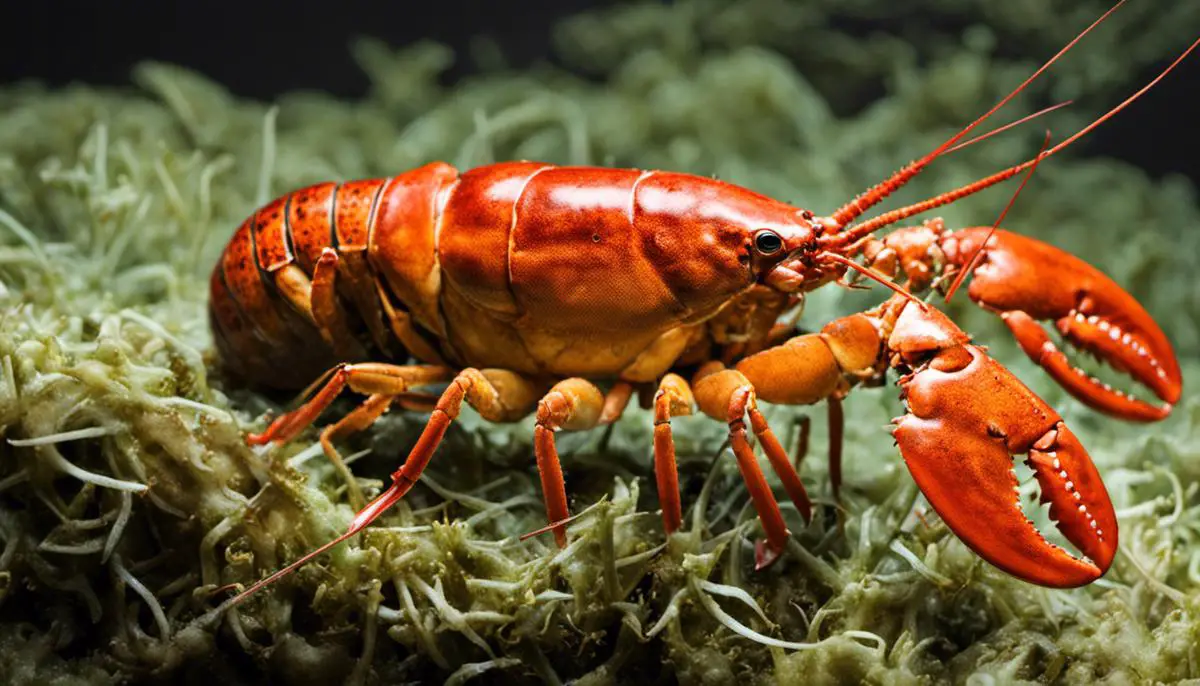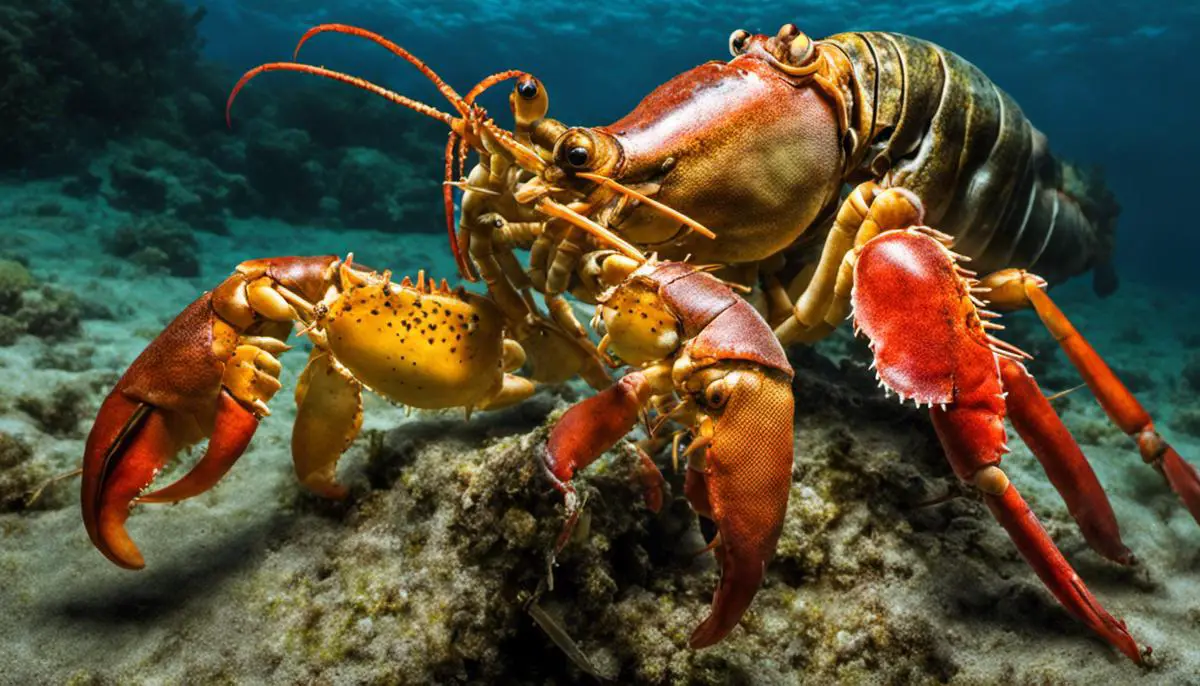The Mating Habits of Lobsters: A Detailed Study
Do lobsters mate for life? Lobsters do not mate for life. They are not monogamous creatures. Instead, lobsters engage in a behavior known as serial monogamy, where they form temporary pair bonds during the mating season. These pair bonds typically last for the duration of the molting cycle, which can vary but is generally around one to two weeks. After mating, lobsters go their separate ways, and the female carries the fertilized eggs until they hatch. Once the mating season is over, lobsters are likely to form new pair bonds with different partners in the next breeding season. So, unlike some species of birds or mammals that mate for life, lobsters exhibit a more transient and seasonal approach to mating and pair bonding.
Deep beneath the waters of the Atlantic, the humble lobster leads a life that is fascinating in its complexity. Central to this aquatic existence is their reproductive cycle – a uniquely intriguing process involving shell shedding, a period of vulnerability, and a singular system of sperm storage and release. There’s a popular myth held by many; that lobsters embody the epitome of monogamy, mating for life.
However, a scientific traversal into the realms of lobster relationships dispels this romantic notion, revealing a transient and competitive reality. This article ventures deeper into these aspects, exploring also the broader implications of our understanding of lobster dynamics, particularly in driving more effective conservation measures to safeguard these crustaceans.
The Reproductive Cycle of Lobsters
When traversing the fascinating landscape of crustacean biology, one must delve into the intricacies of their reproduction. Among these hard-shelled maritime creatures, the reproductive cycle of the lobster is particularly remarkable. These intriguing decapods pervade the oceans, from the sparkling depths of the Atlantic to the expanding abyss of the Pacific. With two dominant species – the American lobster (Homarus americanus) and the European lobster (Homarus gammarus) – the breeding mechanisms exhibited by lobsters are compelling in complexity and elegance, a testament to the extraordinary feats of evolution.
Commencing this detailed dive, it’s essential to highlight the vital role of molting in lobster reproduction. Unlike mammals that can grow in their own skin, a lobster must shed its exoskeleton to increase in size. This process, peculiarly affecting reproduction, is a cornerstone in the lobster’s life cycle. It generates the principal opportunity for mating to occur, as the female lobster requires a flexible exoskeleton to enable effective fertilisation.
Noteworthy in this reproductive narrative is that, before mating, the female lobster opts for a candidate—typically a dominant male – she releases a pheromone-laden urine from glands located near her eyes. This chemical signal triggers an amorous dance between the two potential partners, in which the male’s aggressive demeanor transforms into rhythmic, hypnotizing waves of his long, sweeping antennae.
Once courting behaviors have been consummated, the female signals her readiness to mate through a submissive posture, lying flat on her underbelly. The male deposits packets of sperm, known as spermatophores, into her seminal receptacle. Post-mating, the female stores the male’s sperm until she decides it’s the optimal time for fertilisation.
Undeniably fascinating is that this can occur several months, and even a year post coitus. This remarkable biological feat is known as sperm storage and can be seen in a few other creatures as well. When the eggs are finally laid, they pass through the seminal receptacle, receiving the stored sperm, hence being fertilised.
The fertilised eggs are then affixed to the female’s pleopods, specialised limbs found on her underbelly. They are held securely in place by her tail, thus earning her the moniker berried lobster due to the resemblance to a bunch of berry-like grape. These eggs, often amounting to several thousands, go through a nine-to-twelve-month gestation period before hatching into larvae.
Lobster larvae endure several molting stages before transforming into post-larvae, dubbed ‘puerulus.’ Puerulus resembles an adult lobster’ trademark hard shell and claws. After several more molts, they develop these quintessential features, marking their entry into the juvenile lobster phase.
The trajectory of a lobster’s lifecycle – embedded in molting, intricate mating dances, and delayed fertilisation – exemplifies the complexity, resilience, and adaptability of these enigmatic crustaceans. It is a masterpiece in its own right, a testament of evolution’s artistry, an enticing symphony of correlation between environment and survival. As each new insight into this incredible life cycle is revealed, it serves as a reminder of the bewitching wonders hidden beneath the ocean’s surface, waiting to be unravelled in the continuous pursuit of knowledge.

The Monogamy Myth
Exploring the subject of whether lobsters mate for life can conjure images of a crustacean marriage beneath the waves, complete with miniature lobster wedding rings. However, the reality is that lobsters’ mating rituals and relationships are considerably more complex and fascinating.
The concept that lobsters mate for life is a common, but somewhat misconstrued, belief. Lobsters, in fact, have a serially monogamous mating system. That means a dominant male mates with one female at a time in his territory, but alter this partnership when the next breeding season arises.
This mating pattern can be observed especially among the American lobster (Homarus americanus). The larger, territorial male sets up his residence within a desirable piece of underwater real estate, a sheltered crevice or cave. Once his home is established, it’s not uncommon for a parade of females to approach his dwelling.
The female lobster initiates copulation by delivering a special pheromone-laced urine to the male’s den, which gets his attention. Once the female feels the time is right, she enters the male’s den, allowing him to remove her tough exoskeleton in a vulnerable, post-molt state. This process facilitates successful copulation, but it also implies trust that the male will protect her during this delicate period.
After mating, the female stays in the male’s den until her new shell hardens, a process that typically lasts around two weeks. Should another female appear in the interim, the male happily obliges her advances, following a similar pattern of mating.
Simultaneously, the first female stores the male’s sperm in a special structure called a seminal receptacle, waiting for the perfect conditions to fertilize her eggs, which could be months later. Thus, whilst one could say that lobsters are monogamous, the reality is that their monogamy only lasts for a single breeding season.
Furthermore, it’s worth mentioning that environmental variations can affect lobster mating behaviours significantly. Particularly, population density is known to alter the size at which lobsters mature and, in turn, begin to participate in the mating process. Increased temperatures due to climate change can also disrupt usual mating patterns.
In conclusion, despite widespread belief, lobsters aren’t truly lifelong mates. Their mating habits highlight an ability to forge short-term relationships for reproductive benefit. This fascinating behavioural characteristic speaks to the wider adaptability of lobsters, a trait that has sustained them through roughly 360 million years of evolutionary history. The intricacies of lobster behaviour continue to be a compelling subject for research, one that offers boundless opportunities for advancing our understanding of the complexity and diversity in the animal kingdom.

Implications for Conservation Measures
Moving forward from the intricate reproductive biology of lobsters, it is equally crucial to appreciate how these behavioural principles intricately intertwine with conservation and sustainable fishing practices. Effectively harnessing the comprehensive understanding of lobster mating habits can indeed foster highly nuanced and efficient approaches in these areas.
Firstly, the comprehension of lobster mating practices – primarily the fact that females only mate after moulting and then seclude themselves till their exoskeleton hardens – paints a picture of a critical period of vulnerability. This understanding beckons a need for regulations that protect gravid female lobsters during their mating and egg-bearing stage and mollified females from fishing, thus enabling a substantial increase in the lobster population.
Serial monogamy in lobsters specifically signals that males can indeed mate multiple times in one breeding season, albeit with one female at a time. Hence, posing limits on the capturing of dominant males can significantly cut down the potential decrease in population brought about by overfishing, thereby directly impacting the sustainability of fishing practices.
Furthermore, the spectre of climate change looms over the lobster population. With lobsters being ectothermic organisms, alterations in sea temperatures can indeed cause shifts in their breeding cycles, significantly affecting their population levels. Sustainable fishing regulations must therefore incorporate these variations, tailoring specific strategies depending on the observed patterns in the lobsters’ breeding behaviour.
Finally, the resilience of lobsters, evident from their ability to adapt over 360 million years of evolutionary history, serves as a strong indicator of their capacity to respond to changes both in their habitat and in fishing pressures. This remarkable adaptability is one more motive for conservation practices to foster diverse and robust lobster populations, safeguarding the species’ survival, and ensuing sustainability of the global lobster fishing industry.
In conclusion, the insights gathered from lobster mating habits illuminate a potential roadmap for proactive conservation measures and sustainable fishing practices. The understanding, though intricate and dynamic, has the capability of transforming our interaction with this valuable marine crustacean specie – leading us towards a more balanced and sustainable approach towards marine resource utilisation, ultimately contributing to the seafood industry’s sustainability and our ecological responsibility.

The concept of lobsters engaging in lifelong partnerships is undeniably appealing, yet the reality is that their relationships are far from devoted. As we strive to protect these magnificent species, comprehending their true reproductive nature has become imperative. Misguided perceptions can skew conservation efforts, ultimately causing more harm than good.
Strategic sustainability must take the helm, fortifying the natural mating process whilst reducing the detrimental impacts of lobster fishing. Elevating our understanding of lobster behaviour, their relationship dynamics, and their reproductive processes proves vital in the pursuit of these measures.
As the myths dissolve, we find ourselves with an enriched perspective on these complex creatures and the steps needed to ensure their survival in the difficult and changeable waters of the world.
